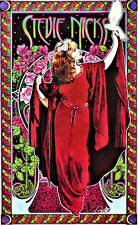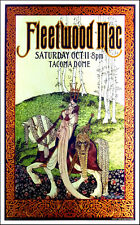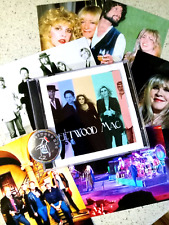|
Gibson Online, Rick Vito's "Original Traditional"
Guitar Personality Gibson Online, 1997 RICK VITO'S "Original Traditional" Guitar Personality
by ? While many guitarists try to reinvent themselves in order to keep pace with music's rapidly changing fashion, Rick Vito has a developed a self-described "original traditional" style simply by staying faithful to his musical roots. It's a style that has graced the recorded work of Bob Seger, Roy Orbison, Bonnie Raitt, Jackson Browne, John Prine, Fleetwood Mac as well as his own solo efforts. "I haven't tried to be a part of any trend," Vito said. "I've always just tried to play with feeling. That feeling, maybe that has personality to it." By simply playing with feeling, Vito says his playing possesses a "personality" that people specifically request, relieving him of the burden of adapting his playing to suit the artist. "I think these people heard something in my playing that they could lend to their own music," Vito said. "In all of those situations, I was never asked to come in and play a certain way. I just did my thing and it worked within the context of the music that they were writing at that time. But people move on, they want to try different things. That's why I'm not a lifelong member of Bob Seger's band or Bonnie Raitt's band or any of these other people. It's a flavoring." Vito says he "flavors" with a mid '50s Gibson Les Paul Junior, a '59 flametop Les Paul and more recently, a custom-made Dobro Style O. "The Junior is my main slide guitar. It's got P-90 pickups in it which I really like for slide," Vito said, noting that was the guitar used to cut the solo in Bob Seger's "Like A Rock." "On the sunburst Les Paul, the middle pickup position is wired out of phase. It's got that [original Fleetwood Mac guitarist] Peter Green sound. (Incidentally, that "out of phase" pickup setting is currently available on stock Jimmy Page Les Paul guitars). "I ordered the Dobro custom with fewer stars and moons in the resonator cover," Vito said. "It was done for cosmetic reasons, but I think it gave the instrument a warmer sound. It isn't as loud, though." Vito is equally adept at slide guitar and fingerstyle and many other techniques. Vito says that he unintentionally developed a technique that allows him to alternate between different styles without changing guitars, tunings, or stopping the tape. This technique is evident throughout his second solo release Blues Town. "I'm just realizing that I did this. It wasn't done on purpose," Vito said. "Usually, you play a slide guitar through the whole way, or fingerstyle through the whole way. Apparently I've come up with a hybrid on this record. This could be an original record after all. An original traditional record. Vito says that incorporating the slide into his recordings provides a great vehicle for him to play with feeling. "It's a very expressive way to play," Vito said. "You can take two notes and play it straight with your fingers [sings notes] and then you take the slide [sings two notes, imitating slide effect], you can hear that feel right away. Also, you have to play a little slower, you can't play that [sings a flurry of notes] stuff on slide. I think to the listener, it allows the listener to absorb the feel a little more." Vito says listeners are taking notice of the slide guitar on a widespread basis. "I think it's going more to the forefront. More people are interested in slide guitar than ever before," Vito said. "This probably started 20 years ago with Duane Allman and Ry Cooder. I think now, it's really popular in country music, it obviously always been popular in blues music and you hear slide solos all the time in pop records." If you're thinking of adding slide to your personal guitar arsenal. Get ready to put in some hours of woodshedding, according to Vito. "My experience is that you have to spend a lot of time with slide guitar before you really start to get it," Vito said. "There's nothing worse than listening to really bad slide guitar. Play whatever you want to play at your own risk. If you want to go ahead and do it, go ahead and do it. There are certainly a lot of untrained ears out there who won't know the difference between good and bad. But my experience is that if you really want to be good at it, you'd better be prepared to spend years and years at it. It's not a technical thing, it's a feel thing. I would advise people to learn from the masters. Listen to Elmore James. Listen to initial guys who were doing this thing and then form your own style from that. Taking this point a step further, Vito suggests hipping yourself to the old stuff and then taking notice to the revival of "American roots music." "American music means a return to roots consciousness, Vito said. "The kind of music that we created here that influenced the world and influenced all the different trends in music. The trends come and go, but the blues and rockabilly and country remain. People recognize that. People listen to popular music from several years back and say "that stuff sucks" and "why did I ever listen to that?" but the roots American music doesn't seem like it's going to go away. It's like a movie holding up after 50 years. It was done right the first time." Thanks to Ali for posting this to the Ledge and to Anusha for formatting and sending it to us.
|









